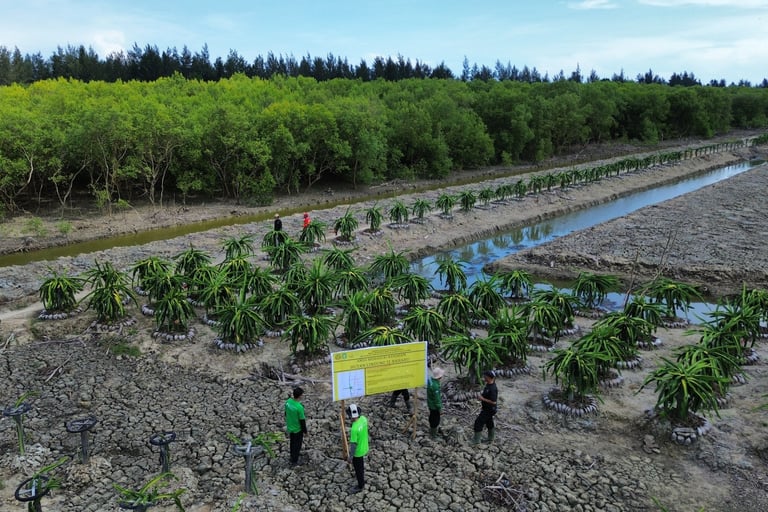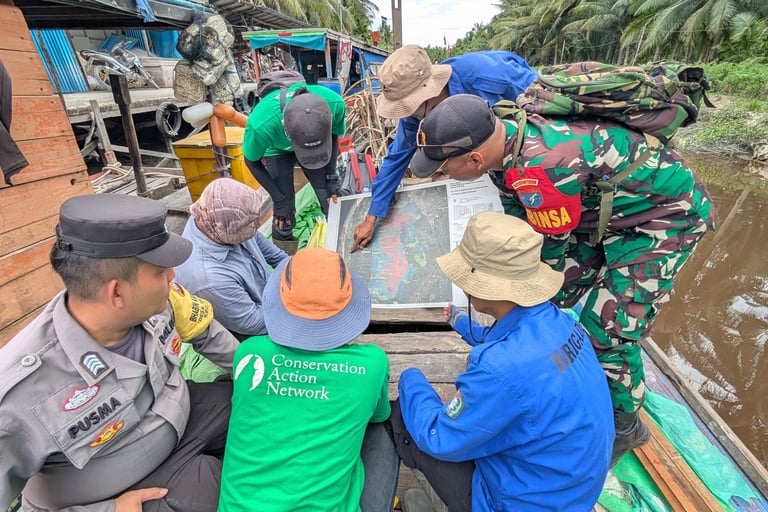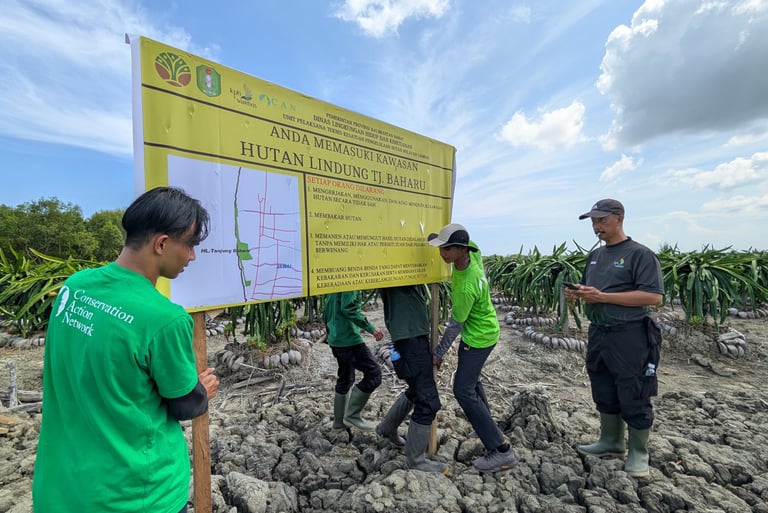Indonesian Forest Day 2025
Protecting Forests, Sustaining Life in Sambas
8/7/20253 min read
Every forest tells a story, of resilience, interconnection, and human responsibility. On this Indonesian Forest Day, we highlight a collaborative effort in Sambas, West Kalimantan, where mangrove forests are not only biodiversity hotspots, but also vital for coastal protection, fisheries, and the lives of nearby communities.
Why It Matters
Indonesia is home to the world’s third-largest tropical forest, yet its ecosystems face constant pressure, from illegal logging, land use change, and the impacts of climate change.
Indonesian Forest Day, commemorated every 7 August, is a reminder of our shared responsibility to protect these landscapes.
The Tj Baharu Protected Forest, located across the sub-districts of Jawai and Tangaran, plays a key role in preserving mangrove biodiversity and stabilizing coastal ecosystems in Sambas Regency. But the area has also faced degradation over time, especially from encroachment and unsustainable land use.
In May 2025, a group of stakeholders came together to change that.
Joint Forest Patrol: A Community-Driven Action
From 14–15 May 2025, a joint forest patrol was carried out in the Tj Baharu area. This collaborative activity brought together:
UPT KPH Sambas (local forestry management unit)
TNI and Polri (military and police)
CAN Indonesia
Local villagers from several surrounding communities
And civil society groups, notably Bekesah Tentang Alam (BTA) Sambas)
The patrol focused on multiple strategies, not only enforcement but education, early detection, and preparation for long-term restoration.
Key Activities on the Ground
Boundary Signs to Prevent Encroachment
Ten forest boundary signs were installed across four key villages to mark the limits of protected forest zones. These signs help communities clearly understand where protection begins and why it matters.
In many cases, encroachment happens not just from defiance, but from lack of information. Clear signage is a first step to strengthening local compliance and awareness.
Mapping Mangrove Degradation for Restoration
Field teams assessed degraded mangrove zones and identified over 27 hectares of affected area in:
Sarang Burung Kolam – ~22 hectares of mangroves are dying due to trapped saltwater in basin-like zones, causing excessive algae and salinity stress.
Sarang Burung Danau – ~5 hectares with similar issues.
Earlier planting efforts, including 24,000 Avicennia spp. seedlings in 2024 and 88,000 Rhizophora apiculata seedlings in 2021, saw poor survival rates (under 50% and 20%, respectively). Factors included timing (planting too late into the dry season), unsuitable species, and poor hydrological conditions.
Now, a more adaptive and science-based approach is being used, including recommendations from a BRIN (2024) study to create drainage channels that can release stagnant saltwater and improve soil conditions.
Monitoring Forest Threats
Patrols were carried out using both motorcycles and motorboats, giving teams access to remote and high-risk areas. These activities not only detect possible violations but also serve as a visible deterrent, reminding people that the forest is being watched, cared for, and valued.
Integrating Conservation with Livelihoods
An important part of the patrol included engaging with local aquaculture and agroforestry communities who live near or within buffer zones.
Rather than creating conflict between conservation and livelihoods, the team promoted the agrosilvofishery approach — an integrated system where mangrove protection coexists with sustainable fish, crab, and plant farming.
In the area, families support themselves through:
Aquaculture: Milkfish, tiger prawns, mangrove crabs, tilapia, catfish, snapper
Agroforestry crops: Hybrid coconuts, citrus, dragon fruit, papaya, and chili peppers
By strengthening these sustainable practices, communities are empowered to protect the forests because they benefit from them, not in spite of them.
“What stood out the most,” said one field coordinator, “was the spirit of cooperation. Everyone, from village elders to youth volunteers, shared the same commitment: the forest must be protected, not just for nature, but for our own future.”
Forests and Coasts: One Ecosystem, One Future
The work in Tj Baharu is a reflection of what’s possible when science, policy, and community action come together. It’s not only about planting trees or enforcing rules, it’s about restoring relationships between people and their environment.
On this Indonesian Forest Day, we celebrate the forests and the coastlines, the people who protect them, and the collective power of action.





